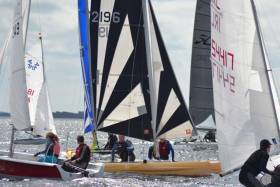Displaying items by tag: CongGalway
A group of onlookers gathered at the Quincentennial Bridge across the River Corrib immediately north of Galway city last Saturday evening were bemused by the sight of a series of sailing dinghies toppling themselves over to float underneath reports John Barry. The boats were completing Europe’s oldest and longest inland sailing race, having battled for 30 miles against a sometimes freshening south to southwest wind from Lisloughrey near Cong on the Galway-Mayo border.
The race was inaugurated over a hundred years before the bridge was built and, after several disappointing years where conditions forced the cancellation of the event, there was huge enthusiasm and a big fleet for this year’s event.
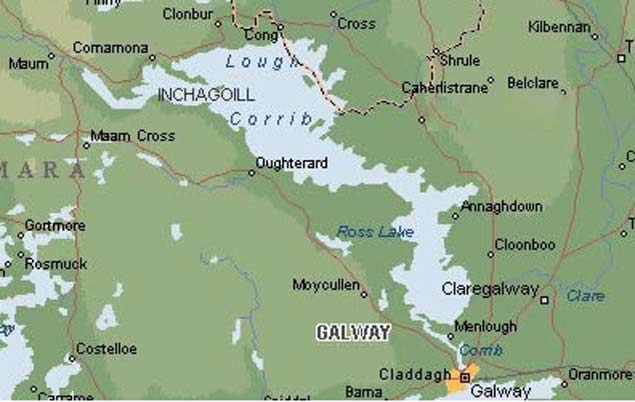 The course is more complex than this basic chart suggests
The course is more complex than this basic chart suggests
Competitors managed to sample every challenge that sailing could offer, with light airs at the very start and finish, a fast downwind stretch with spinnakers flying in the upper lake, and a long beat into the wind in narrow channels during the afternoon. Many of the centreboards and rudders acquired a few new bumps and bruises thanks to the notorious rocks throughout the course.
"The boats were completing Europe’s oldest and longest inland sailing race"
There was a great range of boats competing. In the catamaran fleet, an 18 ft Hobie Tiger was joined by a number of Dart 16s. The 420 was the most popular design in the monohulls with six competing. They were joined by a Wayfarer, Fireball, Laser Stratos, RS200, Topper Sport 14 and the only wooden boat in the race, Bryan Armstrong and his daughter Beth from Sligo with their immaculate GP 14 Solstice, inspired to join this very special “Bucket List” event by the last-minute call on Afloat.ie on June 26th.
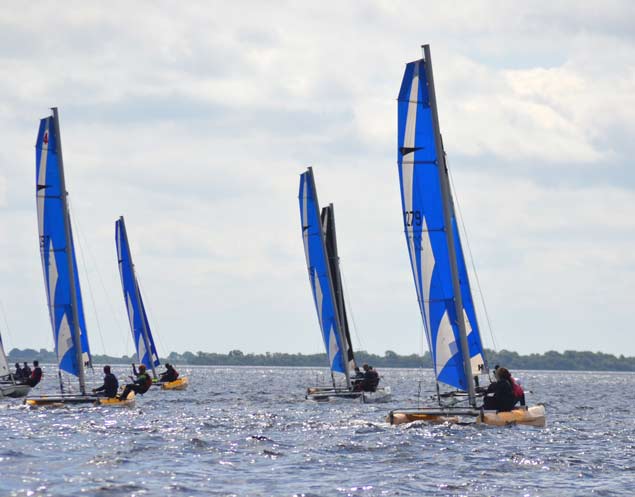 The catamarans were asserting their dominance from the start. Photo: Pierce Purcell
The catamarans were asserting their dominance from the start. Photo: Pierce Purcell
Light airs getting away from Lisloughrey pier made for a slow departure, but the breeze freshened up in time for an upwind start in the wide expanse of the upper lake. Initially, the Hobie Tiger of Tim and Cormac Breen made the early running and pulled away from the chasing pack. As the morning wore on, the wind veered around to the south west and sailors took the opportunity to get the kites flying and the pace picked up substantially.
The wind freshened further after a well-earned lunch break and a refreshment or two at Kilbeg pier, making for a tricky upwind passage for the first part of the second leg through the narrowest part of the channel. This was followed by a long stretch close hauled on a starboard tack as the lake opened up. The Dart 16s took full advantage of the fresh and gusty breeze during this leg before the shelter of the river beckoned.
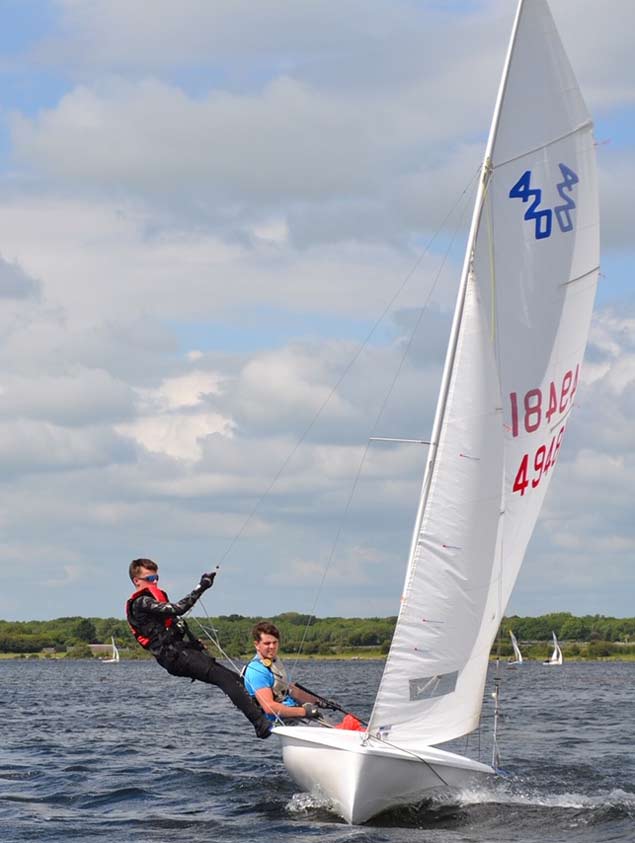 Jack Lee & Jack Nolan with their 420 placed sixth on both stages, and sixth overall at the finish. Photo: Pierce Purcell
Jack Lee & Jack Nolan with their 420 placed sixth on both stages, and sixth overall at the finish. Photo: Pierce Purcell
First across the finish line at Corrib Village and overall race winners on adjusted time were Yannick Lemonnier and his son Sean – the youngest competitor in the race - from Galway Bay Sailing Club. Their total sailing time was an impressively fast 2 hours and 41 minutes. Second were Neil Mangan and Simon Griffin from Blessington with Johnny Murphy from Galway City Sailing Club in third. The prize for the best junior boat went to Rob Talbot from GCSC and Rian De Bairéad from Cumann Seotóireachta an Spidéil who came in fourth, while best senior went to Colm McIntyre and Mícheál Ó Fatharta of GCSC.
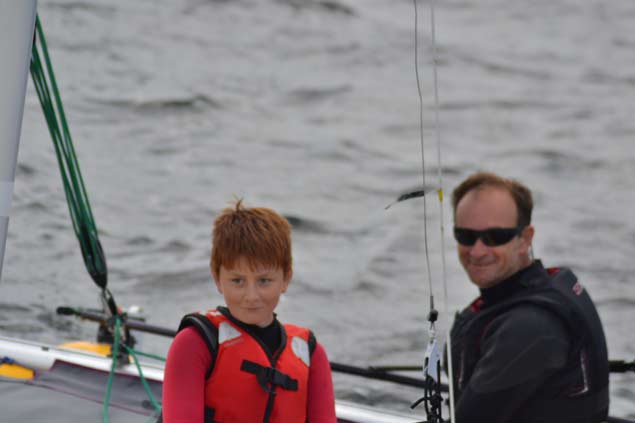 Overall winners – young Sean Lemonnier with his dad Yannick, who skippered the winning Mini 650 Port of Galway in the recent Dun Laoghaire to Dingle Race
Overall winners – young Sean Lemonnier with his dad Yannick, who skippered the winning Mini 650 Port of Galway in the recent Dun Laoghaire to Dingle Race
Since 1882, sailors have raced the length of Lough Corrib. While the origin of the wager which prompted the first races is shrouded in myth and lore, the early races were hotly contested and a great social occasion. These races were very much a test of stamina as well as skill, with competitors completing a round trip of over 60 nautical miles from Galway to Ashford Castle and back again. It was raced annually until 1914 and the outbreak of World War I.
The race was revived in its current format - sailed in one direction from Lisloughrey to Galway - in 1972, and again became a staple in the Galway maritime calendar. However, the weather gods have not been good to the race in recent years. This year, the sailing and boating clubs of Galway came together and moved the race to earlier in the Summer. There was a huge volunteer effort put in from all of the Clubs involved to make the day one to remember.
The organisers and participants were particularly grateful to Aoife Lyons, David Vinnell and John Lillis on the committee boat, Calie Clancy and Mark Francis who co- ordinated safety for the event, the flotilla of RIBs and motor boats who contributed to keeping everyone safe on the water, particularly the huge contribution from CRYC, Martin Roe for on-site catering at Kilbeg, the Civil Defence and all the Clubs who contributed equipment and made facilities available for the day.
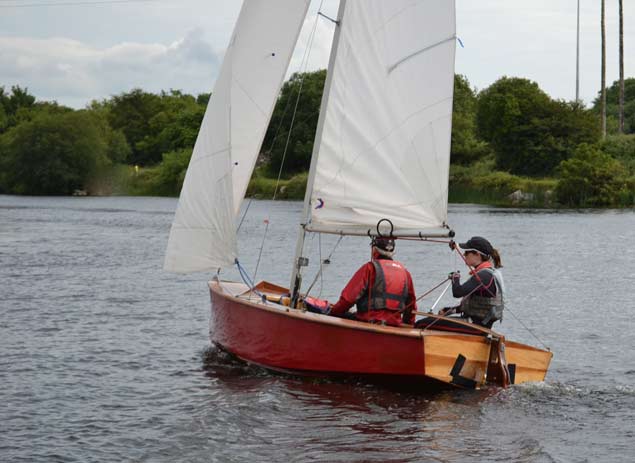 “We’re nearly there, Daddy….” Bryan and Beth Armstrong from Sligo found frustrating conditions in the last mile to the finish. Photo: Pierce Purcell
“We’re nearly there, Daddy….” Bryan and Beth Armstrong from Sligo found frustrating conditions in the last mile to the finish. Photo: Pierce Purcell
The clubs involved in the organization were Corrib Rowing and Yachting Club, Galway Commercial Boat Club, Galway Bay Sailing Club, Galway City Sailing Club and Cumann Seoltóireachta an Spidéil. As for the only wooden boat competing, the GP 14 from Sligo, Beth & Bryan Armstrong managed 7th in the first leg and 14th in the second making them 11th overall but with the crew - as he put it himself - “completely knackered” by the time he stepped ashore in Corrib Village seven hours after leaving Lisloughrey.
Results here


























